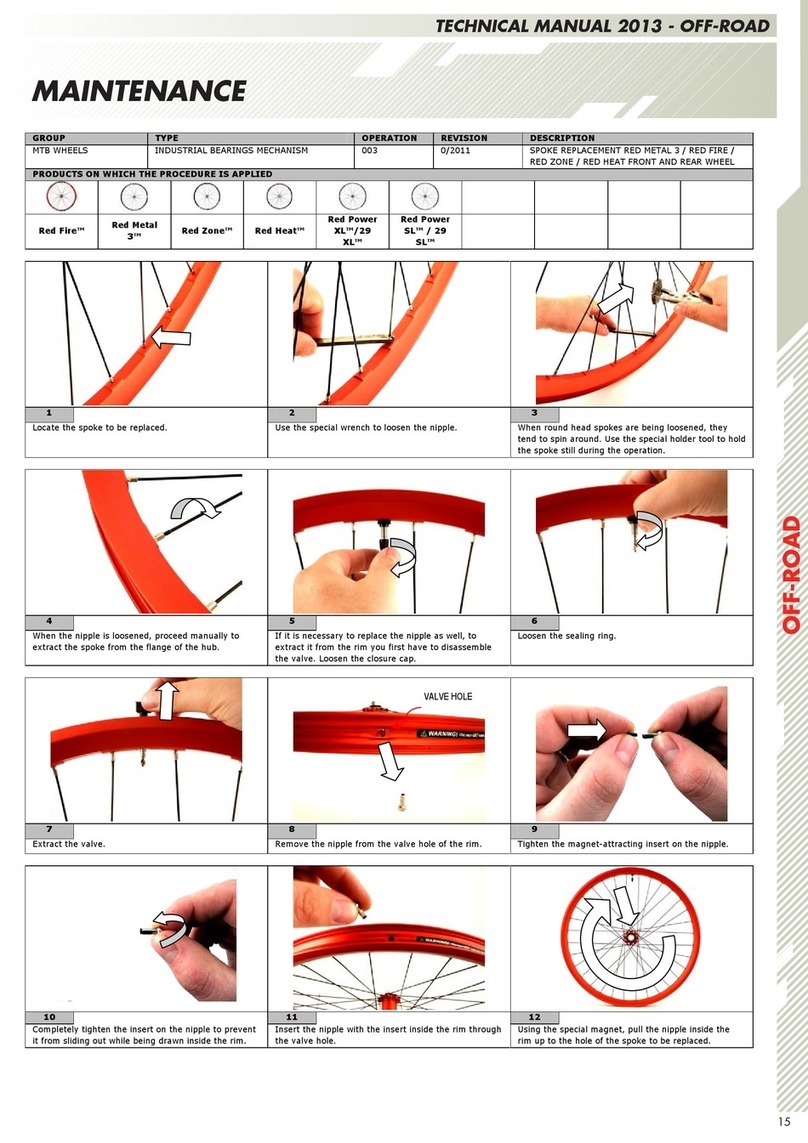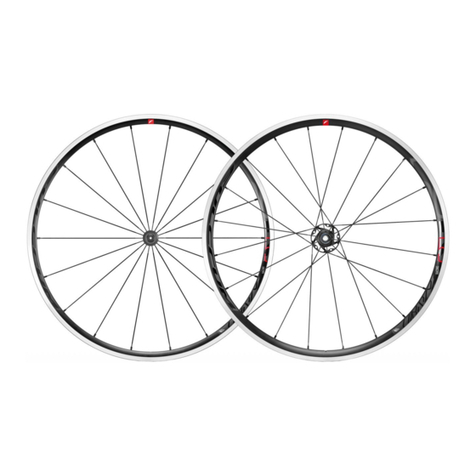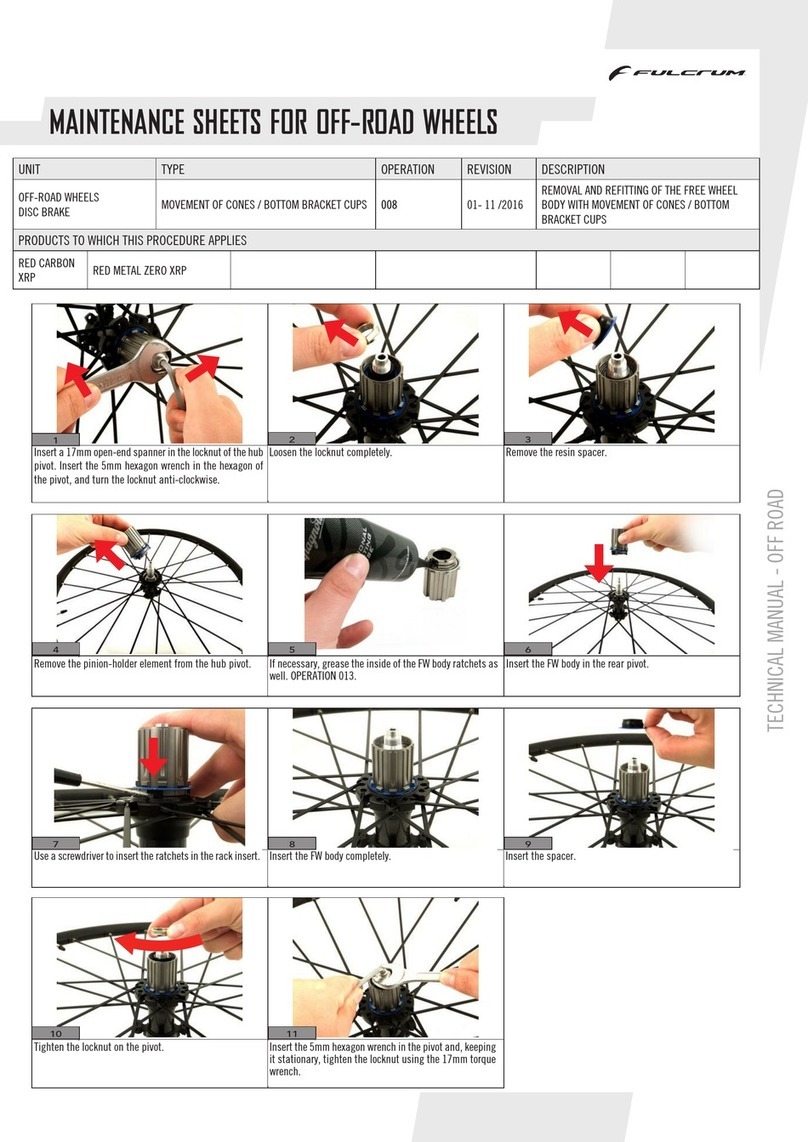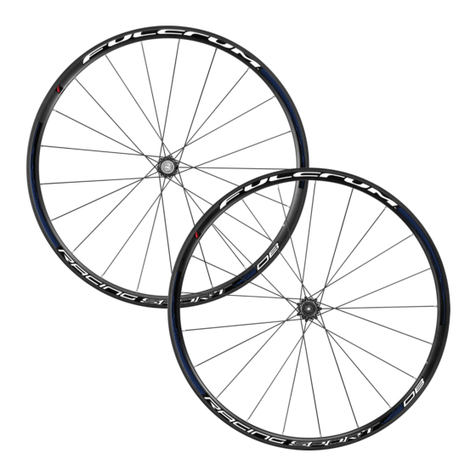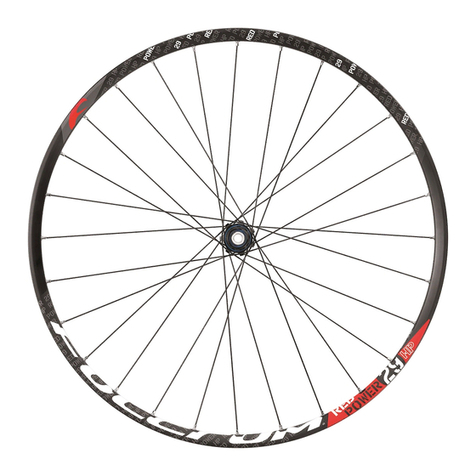ATTENZIONE!
COMPETENZE MECCANICHE - La maggior parte delle operazioni di manutenzione e riparazione della bicicletta richiedono competenze specifiche, esperienza e attrezza-
tura adeguata. La semplice attitudine alla meccanica potrebbe non essere sufficiente per operare correttamente sulla vostra bicicletta. Non sopravvalutate le vostre capacità
tecniche. Fate eseguire i lavori di montaggio e manutenzione da un meccanico specializzato. Solo così è garantita l’esecuzione corretta dei lavori.
“UN INCIDENTE” – Vi preghiamo di notare che nel presente manuale si fa riferimento al fatto che potrebbe verificarsi “un incidente”. Qualunque incidente può provocare
danni alla bicicletta, ai suoi componenti e, soprattutto, potrebbe essere causa di gravi ferite o persino di morte per voi o per un passante.
USO DESIGNATO - Questo prodotto Fulcrum è stato progettato e fabbricato per essere usato esclusivamente su biciclette del tipo “da corsa” utilizzate solo su strade con asfalto
liscio o in pista. Qualsiasi altro uso di questo prodotto, come tandem, fuori strada o sentieri è proibito.
CICLO VITALE - USURA - NECESSITA’ DI ISPEZIONE - Il ciclo vitale dei componenti Fulcrum,dipende da molti fattori,quali ad esempio il peso dell’utilizzatore e le condizio-
ni di utilizzo. Urti, colpi, cadute e più in generale un uso improprio, possono compromettere l’integrità strutturale dei componenti, riducendone enormemente il ciclo vitale;
alcuni componenti sono inoltre soggetti ad usurarsi nel tempo. Vi preghiamo di far ispezionare regolarmente la bicicletta da un meccanico qualificato, per controllare se vi
siano cricche, deformazioni, indicazioni di fatica o usura (per evidenziare cricche sui particolari si raccomanda l’utilizzo di liquidi penetranti o altri rivelatori di microfratture).
È necessario smontare i componenti della vostra bicicletta, in particolare i pedali, durante questo tipo di controlli Se l’ispezione evidenziasse qualsiasi deformazione, cricca,
segni di impatto o di fatica, non importa quanto piccoli, rimpiazzate immediatamente il componente; anche i componenti eccessivamente usurati devono essere immedia-
tamente sostituiti.
•Se pesate più di 109 kg/240 lbs vi raccomandiamo di non utilizzare queste ruote. La mancata osservanza di questo avvertimento può provocare un
danneggiamento irreversibile del prodotto.
• Se pesate più di 82 kg/180 lbs, dovete prestare particolare attenzione e fare ispezionare la vostra bicicletta con una maggiore frequenza (rispetto a chi
pesa meno di 82 kg/180 lbs). Verificate con il vostro meccanico che le ruote Fulcrum che avete scelto siano adatte all'uso che ne farete e stabilite con lui la frequenza delle
ispezioni.
Nota: Utensili forniti da altri produttori per componenti simili ai componenti Fulcrum®potrebbero non essere compatibili con i componenti Fulcrum®. Similmente, utensili
forniti dalla FulcrumWheels S.r.l.potrebbero non essere compatibili con i componenti di altri produttori.Verificate sempre col vostro meccanico o col fabbricante dell’utensile
la compatibilità, prima di usare gli utensili di un fabbricante sui componenti di un altro fabbricante.
L’utilizzatore di questo prodotto Fulcrum®riconosce espressamente che l’uso della bicicletta può comportare dei rischi che includono la rottura di un componente della
bicicletta come pure altri rischi, dando luogo a incidenti, lesioni fisiche o morte. Acquistando e utilizzando questo prodotto Fulcrum®, l’utilizzatore accetta espressamente,
volontariamente e coscientemente e/o assume tali rischi e accetta di non imputare alla Fulcrum Wheels S.r.l. la colpa di qualsiasi danno che ne potrebbe derivare.
1
ITA
®

